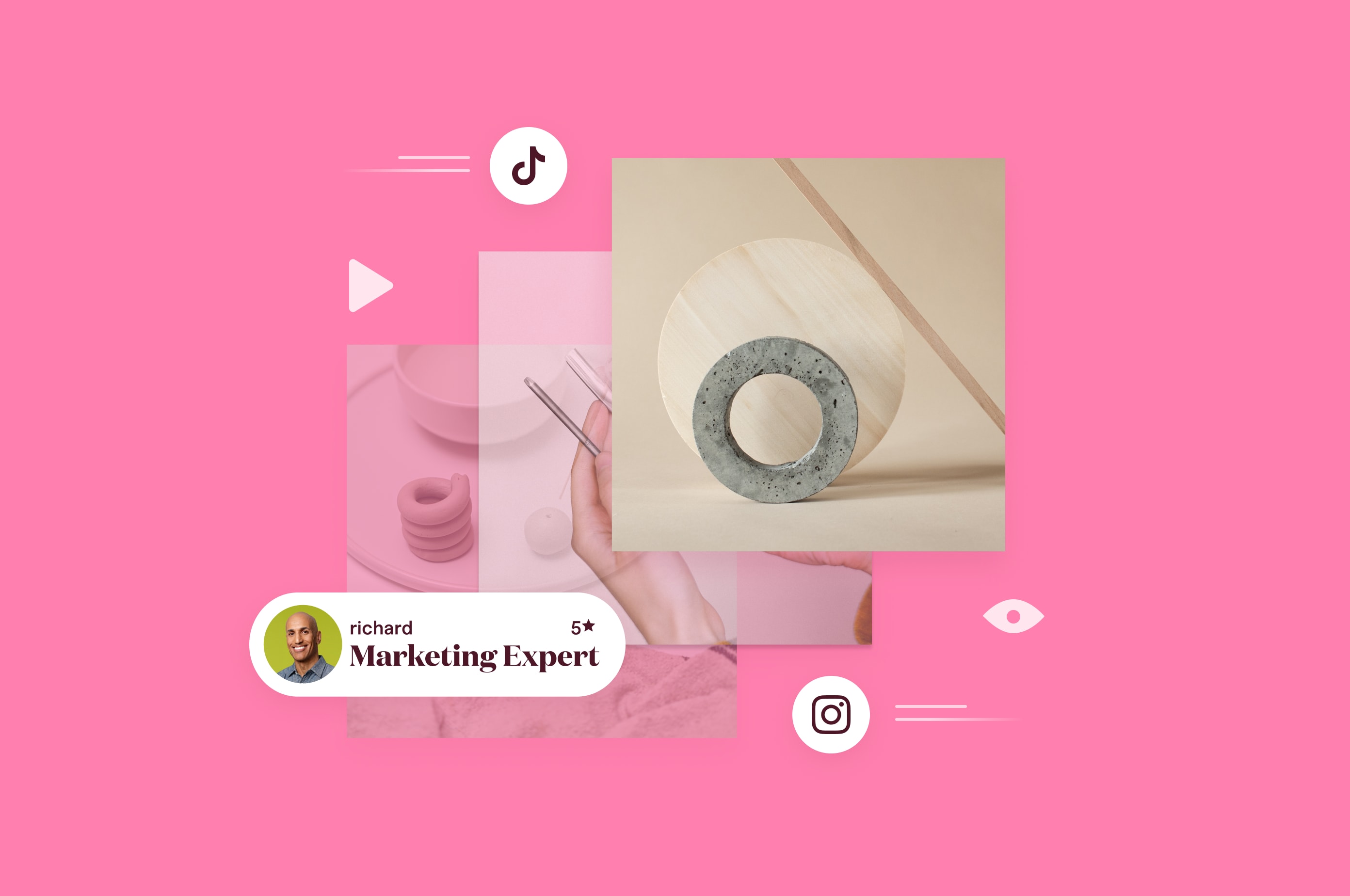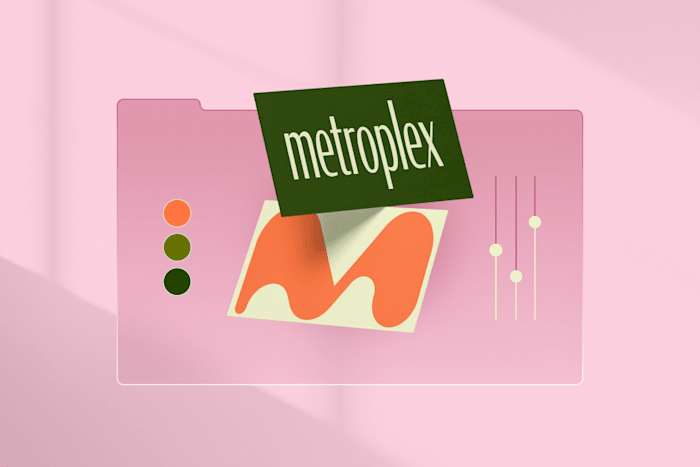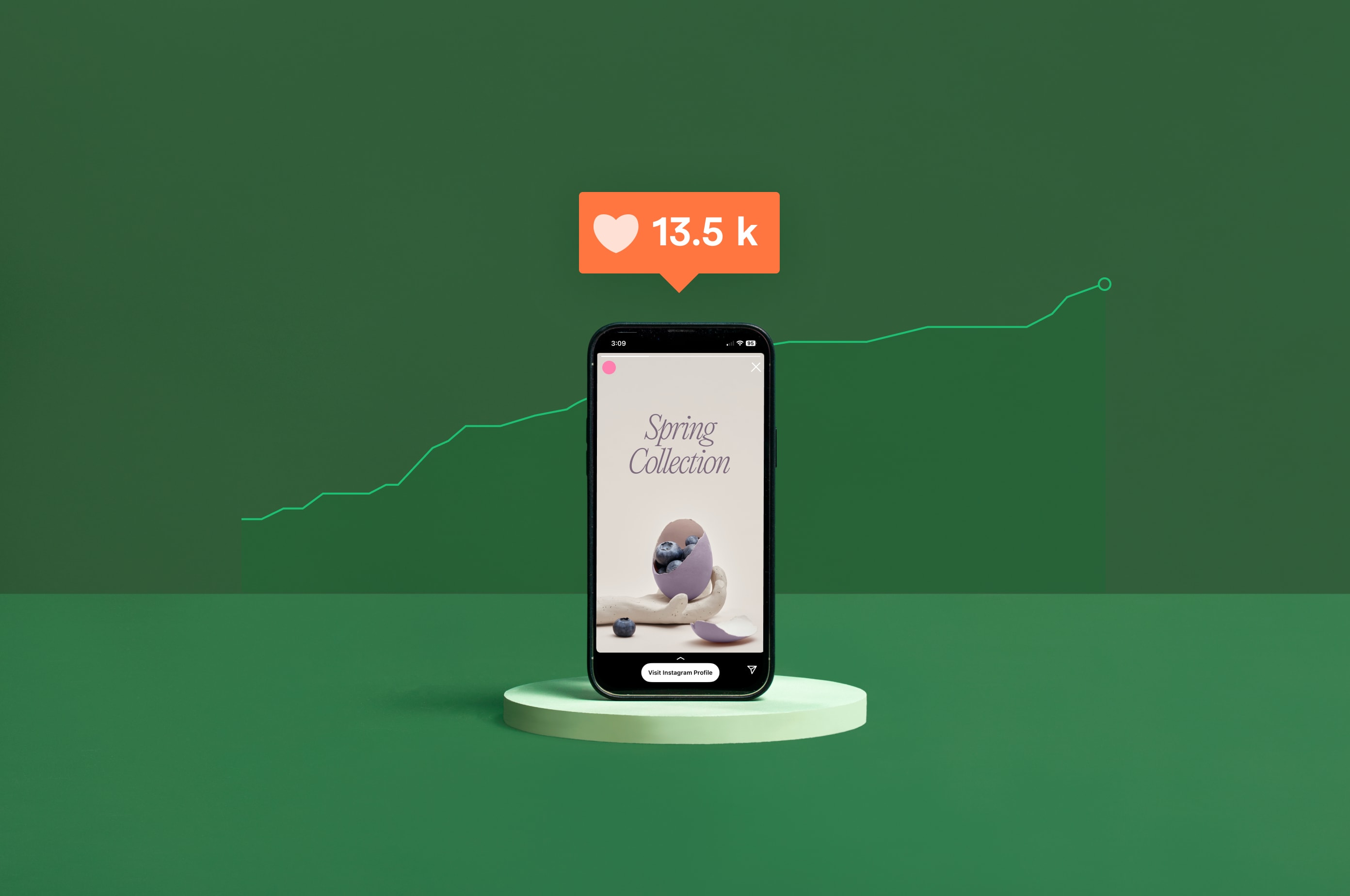What Is Branding? Build a Powerful Brand Identity
Learn what branding is and how to build a strategy that makes your business stand out.
 May 2, 2025
May 2, 2025 11 minute reading
11 minute reading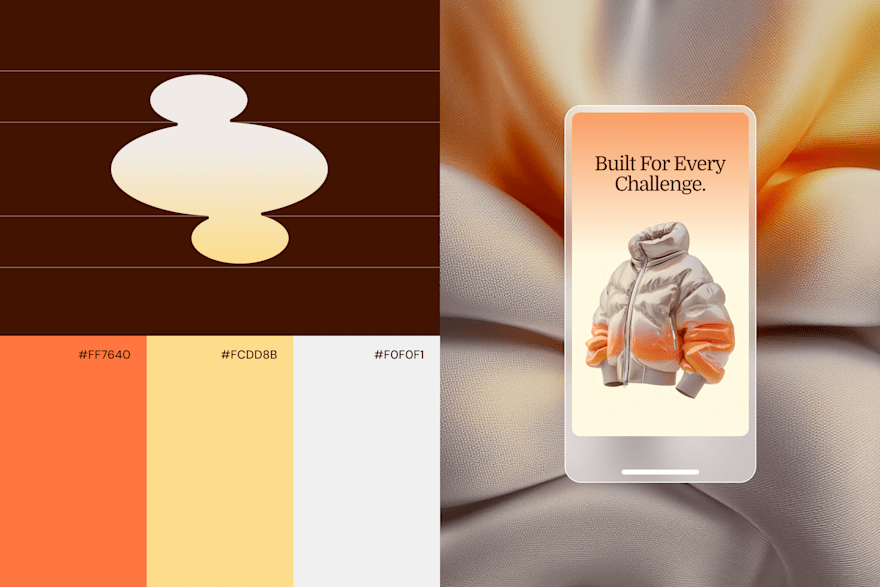
So, you have a business. Whether you’re a solo operator, small team, or large corporation, you need to find ways to connect with your target audience.
Marketing is a broad field, and there are plenty of opportunities to get your name out there. But, before you start spending money on advertisements, consider your branding strategy. Think about how you will present your brand to the world, from the colors in your logo to the values and message you want to share.
Branding is about the sum of every experience a person has with a product or service, from inception to purchase to consumption to disposal.
Want to know more? Keep reading because we’re about to break down everything “branding” for you.
What is a brand?
Every business has a brand. Your brand is the overall impression customers have of your products and services.
While the brand name, color palette, and logo are all part of your brand, it goes much deeper. The way you run your business and what sets you apart from your competitors also matter.
For example, your reputation, workplace culture, company values, and pricing all play a role in how customers feel about you. You may be known as a brand that gives back to the community or one that prioritizes excellent customer service.
Remember, your brand is a powerful tool to connect you to your audience and grow a successful business. A strong brand can also:
Define and drive your internal company culture
Make your marketing more effective
Justify premium pricing strategies
Build customer retention and loyalty
Your message can change over time, and your target audience may notice all the great things you are doing. But, it doesn’t have to be a “do your best and wait and see” approach. When you consciously tweak your branding, you can positively influence how people perceive your business.
What is a brand identity?
Brand identity is anything that customers can see. It’s what helps people recognize a company, product, or individual.
Your brand identity may include:
Logo and icons
Color palette
Typography and fonts
Visual elements (illustrations or photography)
Tagline and written content
Sonic branding and jingles (sounds)
A brand's identity also includes your reputation. When people hear your name or see your logo, they associate that brand with whatever past experiences they've had.
Let’s look at color. The email marketing platform Mailchimp is known for its black, white, and yellow color palette, which is used throughout its website and social media channels.
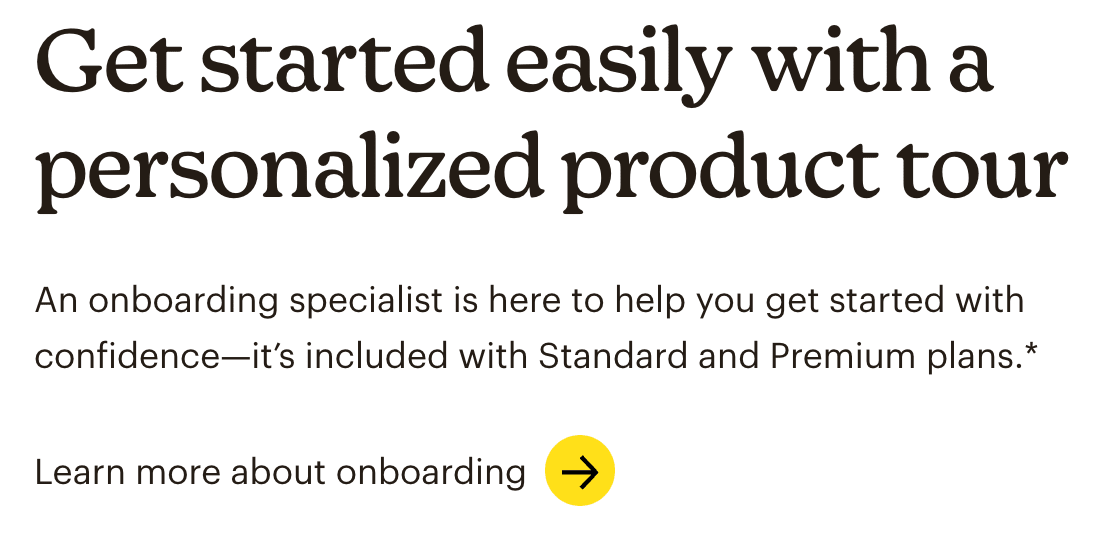
MailChimp
The aesthetics you choose for your brand tell people how to feel about your business. Colors, icons, and words can all impact their emotions.
Blues, whites, and greens signal trust and professionalism, while yellows and oranges are fun and happy hues. Curvy letters are playful and feminine, while a typeface like Times New Roman screams traditional and to the point.
Photographs and illustrations of diverse models can show that you are inclusive, while upbeat written content will highlight your personality.
The purpose of branding
Good branding should be a priority of every business. Why? Let’s break it down.
Brand recognition
Brand recognition is how recognizable your business is to potential customers.
Successful brands can be identified with minimal clues. For example, you may think of Starbucks if you see green and white. Or, if you hear the “ta-dum” sound, it will probably remind you of Netflix.
There are four stages of brand recognition:
1. Recognition: When customers have heard of your brand or seen your logo before.
2. Recall: When customers see your brand, it looks familiar.
3. Top-of-mind: When customers are interested in a product, they think of your brand.
4. Brand preference: When your business is the first choice for your customers.
Once people know who you are, you can focus on brand loyalty. This refers to how likely they are to continue to choose you over a competitor. Take Coca-Cola vs. Pepsi or Apple vs. Samsung—most people have a firm favorite that they are loyal to.
Sixty-four percent of people say they are loyal to specific brands and shopping destinations. So, once you make an emotional connection, your brand can become a part of their identity or lifestyle. This means they will buy from you again and again.
Find a branding strategy specialist for hire
Reassure consumers of quality
Seventy-four percent of people say quality keeps them loyal to a brand, while 51% say they would pay more for something well-made.
Branding can help create a perception of quality, even among those who have no previous experience using your goods or services.
Showcase your product features to give consumers the right impression. Encourage customer reviews and build a strong social media network to gain a positive reputation.
When it comes to design, there are things you can do to say “quality” without words. Try these:
A professional, consistent logo
Colors that signal quality, such as white, black, purple, navy, or gold
Minimalist design that is free from clutter
Clear imagery, including photographs
Timeless fonts such as Helvetica or Garamond
Look at Lexus, a car manufacturer known for its luxury, high-quality vehicles. The branding showcases this message:

Lexus
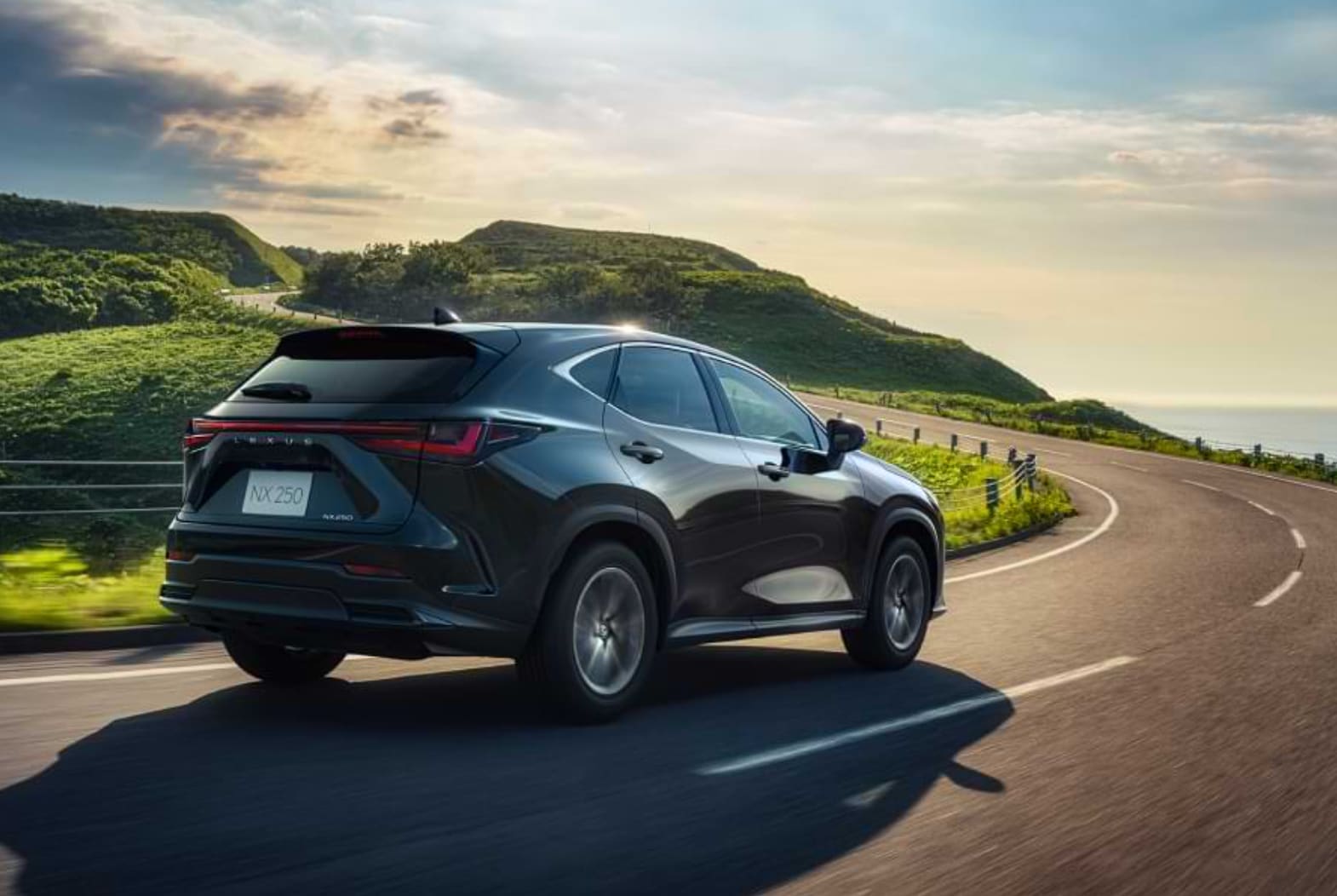
Lexus
Lexus sells an experience with premium features and exclusivity, and the branding is a direct reflection of this.
It’s also worth mentioning that these cars are expensive, indicating luxury. While some customers want to snag a deal, others see a higher price as a sign that it’s made better than a cheaper alternative.
Engage with consumers
Branding helps you engage with both new and existing customers. In fact, 65% of consumers want to feel connected to their favorite brands.
How can branding boost engagement? Everything from colors to shapes to photography can tell a story — making people feel connected to your brand.
Distinct imagery helps customers identify your business and over time can build trust and brand loyalty. Make sure it is memorable without being cluttered or confusing.
Language can also keep people interested. When you tailor your words to a specific audience, they will feel like you’re speaking directly to them.
For example, if your product or service is aimed at teenagers, you can use light-hearted language with abbreviations and pop culture references. On the other hand, a business targeted to seniors may use professional language that’s clear and jargon-free.
The goal is to create a positive brand association. So, when people think of your business they have a positive emotional response, which improves the chance of a sale.
Remember, you can speak directly to your customers using social media and email campaigns.
Help consumers decide on a purchase
Chances are you have competitors, so you need to find ways to stand out in the crowd. If you’ve done market research, you should know what your customers want. This way, you can run with the features that make your brand unique.
Maybe they are looking for something that’s quality, affordable, eco-friendly, locally-made, or trustworthy.
For example, if you pride yourself on selling a product that’s handmade, you can use fonts that look like handwriting, rustic packaging, and low-key photography for that “artistic feel.” This is how hand-poured candle brand Ivy & Wood does it:
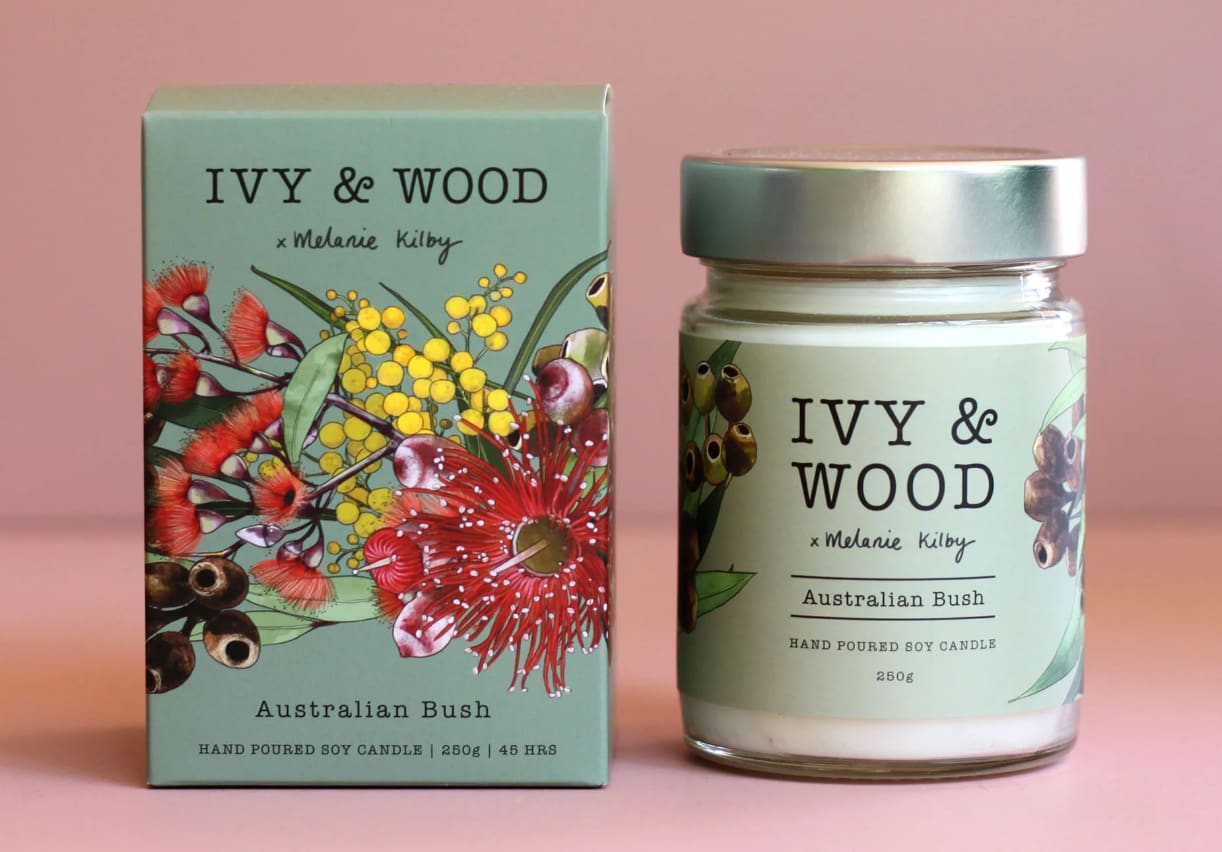
Ivy & Wood
You can research what your direct competitors are doing and try to do better. But be mindful that good design is slick and professional, and certain colors are used for a reason.
For example, red or yellow can indicate value or a “sale price,” while blue promotes trustworthiness and green is eco-friendly.
Remember to encourage reviews from previous customers. Fifty-four percent of shoppers say online reviews are the most important factor in their decision-making process.
How to create a brand strategy
Now that you know why branding is important, it’s time to work on your brand strategy. Here are the steps to take:
1. Create your vision
First, you need to think about the vision for your brand. Ask yourself these questions:
What are your goals?
What is the purpose of your brand?
What are the top brand values?
How do you want your customers to see you?
Where do you want to be in the next 5-10 years?
What is your brand identity? For example, are you fun, serious, or modern?
You can also use this stage to define your ideal customer. Think about their educational background, careers, location, gender, income, interests, and hobbies. Where do they shop? What are their pain points, and how can you solve them?
2. Decide what makes you different
Then, look at your competitors to determine your points of difference. This starts with a unique value proposition, a fancy way of saying, "What makes you unique and why should they buy from you?"
Let’s say you are a chocolatier wanting to compete with a brand like Cadbury. If you’re starting out, you won’t have the brand recognition of this (purple) chocolate giant. But you may be a locally made, sustainable brand with handmade treats.
Or, maybe you make the world's best smoothie or a completely new kind of fabric that apparel companies are itching to get their hands on. Whatever you do, why are you the best at it? You need to be able to communicate that to your audience clearly.
An authentic brand doesn't just say they have certain values. They show it through actions. Starbucks, for example, has always been vocal about its support for ethical coffee farming and sustainability. The company proves its commitment with certifications and origins listed on each coffee. Additionally, they produce an annual Social Impact Report.
Find a branding strategy specialist for hire
3. Create your brand story
Every brand has a story. From how and why your business started to what your core brand values are — your story can help you connect to your target market.
When creating a narrative, make sure it's relatable to your customers. While it is about “you,” it’s also about “them.” So, think about why they should care and what’s in it for them.
Nike is a sports brand with a clear identity and story. It promotes inclusivity and a healthy lifestyle, whether you’re a professional athlete or a mom who enjoys running a few laps around the block.
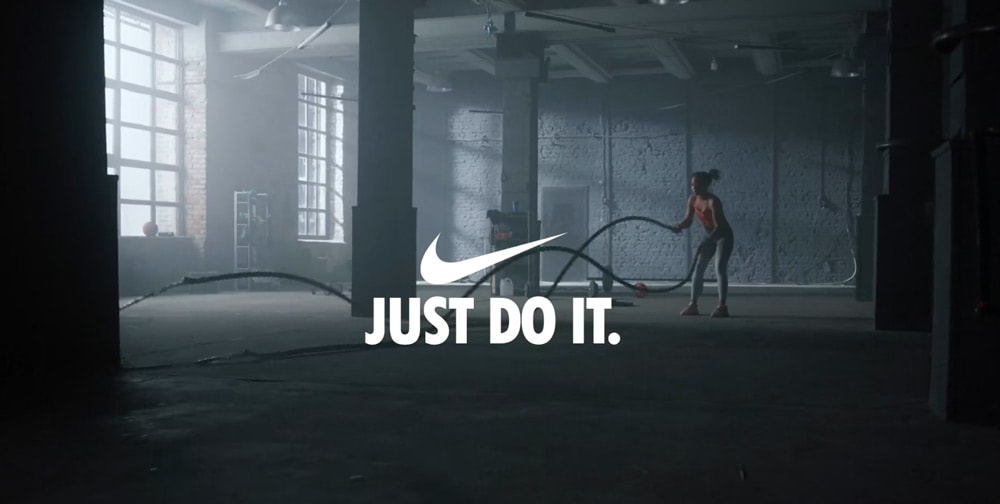
Nike
The brand name comes from the Greek goddess Nike, and the “swoosh” represents her wings. Nike is the goddess of victory, which fits with the “just do it” tagline.
Customers can connect their own personal goals and dreams to this narrative, which has been key to Nike’s success.
4. Choose your logo
Unless you have design experience, we recommend hiring a professional logo designer. You can still have input while taking advantage of their expertise.
A branding kit often revolves around the logo, so it’s important to get it right. The look and feel should reflect your business and give customers an idea of what you do.
Your logo can include text and images. Here are a few tips to consider:
Keep your logo simple with three or less colors
Choose colors that reflect the mood of your brand
Make sure your logo is original and memorable
Your logo should be adaptable for different screens and print
Look for fonts that are legible and match your brand’s personality
Once your logo has been created, get feedback from people you trust
Sometimes, brands need variations of the logo. For example, a wordmark features an icon without words. And, a brand mark is a logo without pictures — both can improve brand recognition.
Think of McDonald's golden arches or Mastercard's red and yellow circle icons. Both are recognizable without the company name included, thanks to the brand equity built over the years.
5. Define your brand voice
Your communication with your customers should be consistent across all marketing campaigns. Your “brand voice” includes the language, tone of voice, and personality that you use.
If you understand your target audience, you will already have an idea of what elements your brand voice should include.
Here are some examples from leading companies:
Harvey Davidson: The motorcycle brand’s voice is tough, rebellious, rugged and adventurous
McDonalds: The fast-food giant is friendly, approachable, affordable, and family-friendly
Tiffany & Co: The brand voice for this jewelry company is elegant, classic, and clever
Disney: The media company’s brand voice says entertainment, wonder, magic, and nostalgia
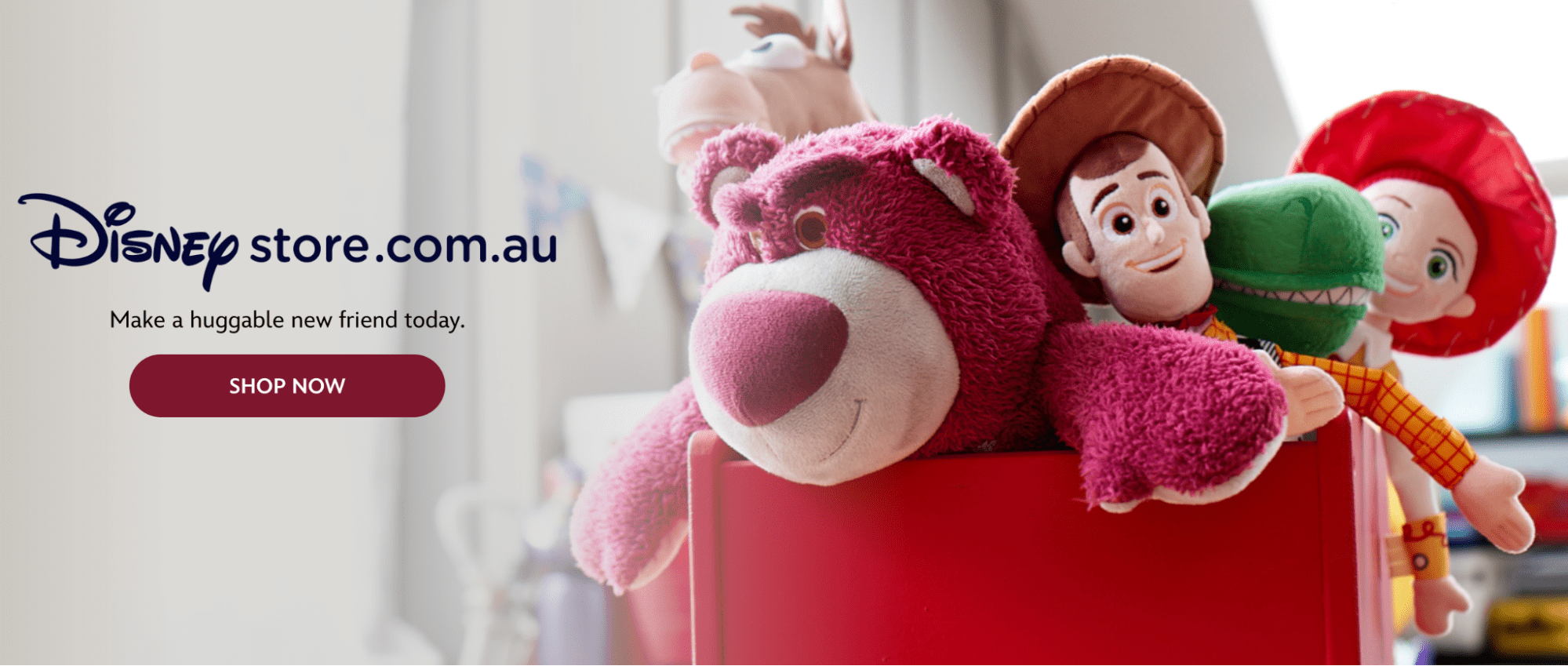
Disney
Disney often uses its much-loved characters in its content. The image above shows how the online store is promoted, with both the imagery and text fitting the brand's voice.
6. Create brand guidelines
Your brand guidelines will be a complete toolkit of how you want your business to be presented. If a writer, designer, or marketing expert starts working with your brand, they can use these guidelines to create consistent content.
This style guide should include:
Mission statement and brand values
Typography, including fonts, sizing, headings, and case
Color palette and key brand colors
Language, such as US or UK English
Tone of voice, grammar, and abbreviations
Image and photography guidelines
These guidelines can be compiled into a shareable document. Google Docs is convenient because you can edit the file whenever needed and grant access to the right people.
Find a marketing strategy specialist for hire
7. Implement your brand across sales channels
Once your branding is sorted, you can focus on your sales channels. You may have different ways of connecting with your customers, including social media, your website, and in-person.
Regardless of where you are putting your marketing efforts, it’s important to be consistent. Use the same graphics, typefaces, and tone of voice across every channel.
A cohesive and easily recognizable brand identity helps drive sales and marketing efforts. And remember, customers learn to trust a brand through repetition. If they recognize you in a new ad you're running, you're much more likely to convert them. It all works together.
Branding examples
Want some good branding examples? Here are three businesses to inspire you:
1. Frank Body
Over 10 years ago, Frank Body launched a unique coffee body scrub that quickly became a must-have shower item.
The beauty brand has a positive culture with innovative products made from recycled coffee beans and a focus on sustainability. To get the right message across, Frank Body has a consistent branding toolkit with:
Soft pastel colors to connect with a female audience
Photography of models with different body types to promote inclusivity
Simple, fun language that general consumers can understand
Serif font to show both the professionalism and simplicity of the brand
A focus on sustainable, cruelty-free values in written content

Frank Body
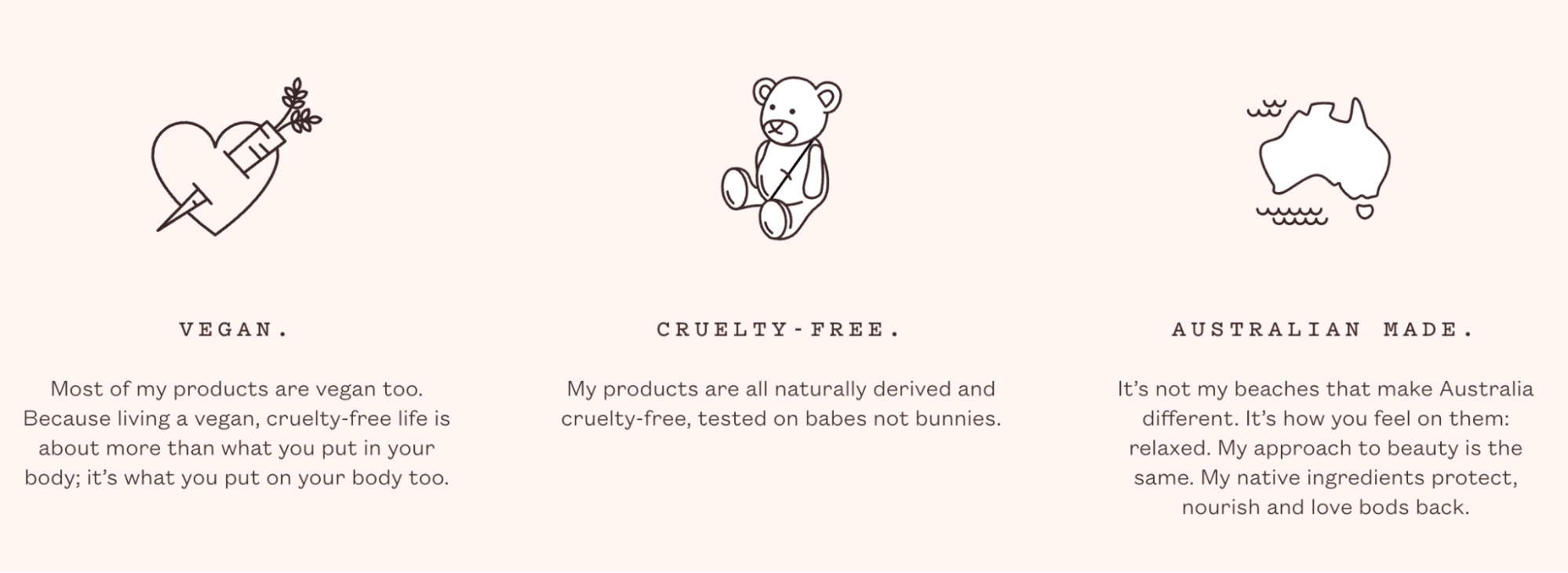
Frank Body
Frank Body started as a small venture, but the company’s brand has become so strong that the products are now sold at leading retailers in more than 144 countries.
2. KeepCup
KeepCup has changed the way we drink takeaway coffee. As an alternative to disposable cups, KeepCups are barista-approved and can be used repeatedly.
The brand has a sustainable focus but also prides itself on high-quality design and includes:
A teal and white color scheme to represent fresh water and hydration
Lifestyle shots of coffee cups to showcase the “on-the-go” use
Imagery with crisp white backgrounds to reflect the quality of the products
Modern, clean type that’s simple and easy to read
A tone of voice that’s modern and emphasizes the practicality and durability of the cups

KeepCup

KeepCup
There is also a strong story behind KeepCup. In 1998, siblings Abigail and Jamie were worried about the environmental impact of non-recyclable, disposable cups. But they also knew that for many, a daily coffee was something to look forward to.
The solution is a reusable design that keeps the heat in and can be taken to your local barista. This small invention is changing the culture of coffee drinkers everywhere.
3. Tinte Cosmetics
Beauty companies typically excel at branding. Let’s look at Tinte Cosmetics, which offers a range of makeup products in retro packaging.
The brand’s story is all about nostalgia. The products are designed to bring back memories of applying your first lipstick or eyeshadow. Tinte Cosmetics spreads this message through branding, using:
A vintage pink palette with pops of color that appeal to a female audience
Typefaces that have an antique feel to give that “olden day” vibe
Products are housed in retro packaging, including metallic tins
White backgrounds let the products speak for themselves
The key points are repeated, such as “organic,” “natural,” and “USA made”
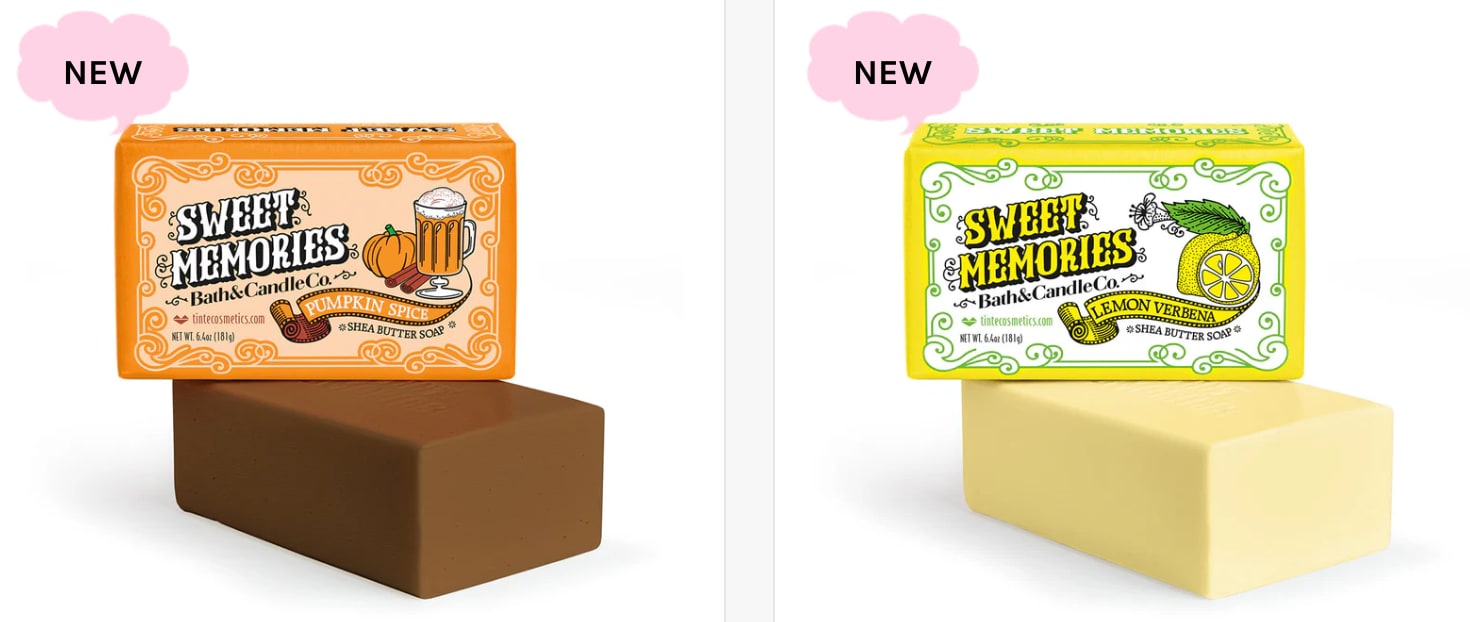
Tinte Cosmetics
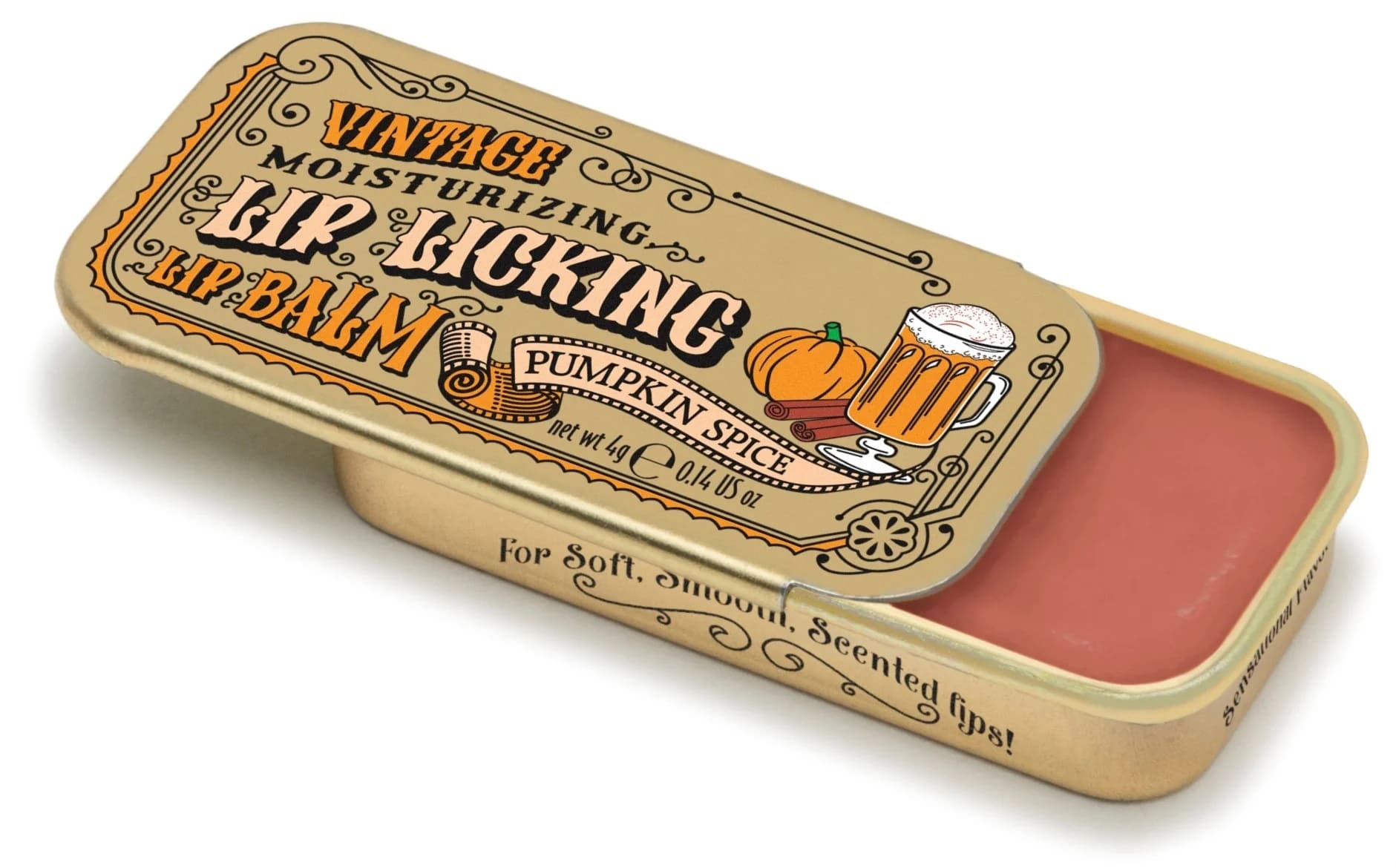
Tinte Cosmetics
Customers can even buy Tinte-branded merchandise such as hats and T-shirts. If your audience is prepared to wear your logo, it is good for both brand awareness and customer loyalty.
Hire professional branding services on Fiverr
When it comes to branding, there is a lot to think about. You won't have time to do everything from graphic design to jingles to copywriting. What can you do about it? Browse Fiverr, of course.
Find the perfect branding professional on Fiverr to help you stand out from the competition. Browse top-rated branding services, including logo design, brand strategy, visual identity packages, and more.
Branding FAQ
What is branding in simple words?
Effective branding means creating a unique identity for your business. It includes a wide range of brand elements, including graphic design, written text, and photography.
When done right, both existing and new customers will recognize you with minimal information. For example, they may think of you when they see the colors of your logo or the shape of your icon.
What are the four elements of branding?
Branding can be split into four key elements:
1. Brand identity: What your customers can see, such as the logo, tagline, and illustrations
2. Brand personality: The traits you want to be associated with your brand, such as “traditional,” “fun,” or “serious.”
3. Brand messaging: The story you want to tell your audience, including your values and mission
4. Customer experience: How people feel about your brand and the experiences they have had
What are the four steps of branding?
Branding has multiple stages. To start, you’ll need to think about your vision and decide what makes your brand unique. Then, you can create your brand story and design a logo. You’ll also need brand guidelines so everyone is on the same page. Finally, you can start to implement your branding across all your marketing channels.
What is the main purpose of branding?
Branding helps customers recognize your brand and puts you front of mind when they are looking to buy your goods or services. It can also improve trust, brand loyalty, and sales.

